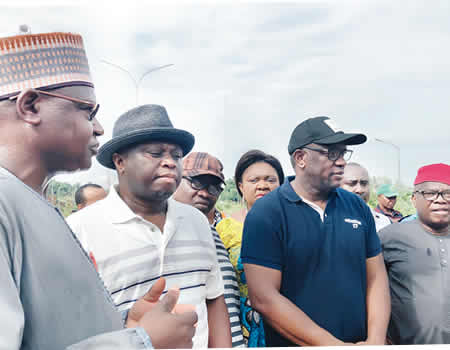The minister met the Anambra State Commissioner for Environment, Mr Michael Okonkwo. Some of the sites visited included Uru Umudim in Nnewi North Local Government Area.
At one of the sites, the minister explained to newsmen the activities of NEWMAP in the state and what is sought to achieve.
“Nigeria Erosion Watershed Management Project is an initiative of the Federal Ministry of Environment in collaboration with the World Bank. It is a facility we have gotten and we are addressing environmental issues, particularly erosion.
“We have come to realise that what we did in the past was to only attend to the civil engineering aspect and forget about other factors. NEWMAP will adopt an integrated approach. We don’t just address the gullies and do the civil engineering work, we do the bio-mediation work. We look at the entire watershed, find out the characteristics of these watersheds, and then tackle the watershed issues. We plant trees, and make sure the soil is properly covered and remediated.
ALSO READ: Ghana becoming MICE hub in West Africa
“If you do that, once the soil is not left fallow, you stand a greater chance of stabilising the soil, taking care of erosion and recovering the land. We are not just stopping the gully erosion, but reclaiming the land.”
He added that, “This integrated approach has shown some remarkable success stories. That is why NEWMAP has stepped up its operation. We started with six states in the Southeast of the country. We are going to 19 now. We have more states wanting to key into this programme.
Speaking further on the NEWMAP intervention, he said, “I think this is blessing to Anambra State. Anambra State is known to be prone to gulley. There is limited land mass in Anambra, so we have to manage what we have properly and efficiently too. That’s why we are here.”
It has been reported that there are 62 “critical” erosion sites in Anambra alone, said to cost the Federal Government N17 billion.






